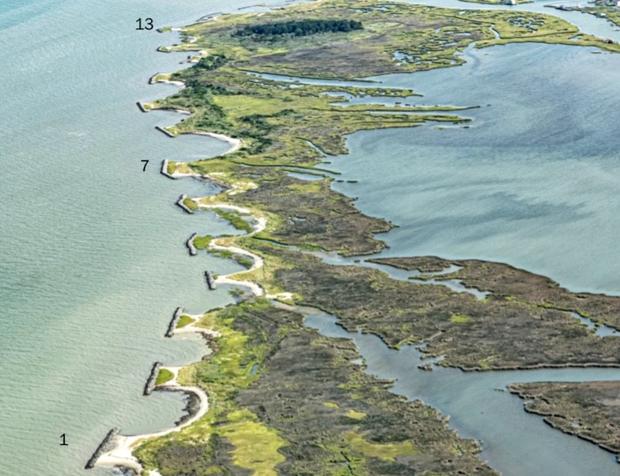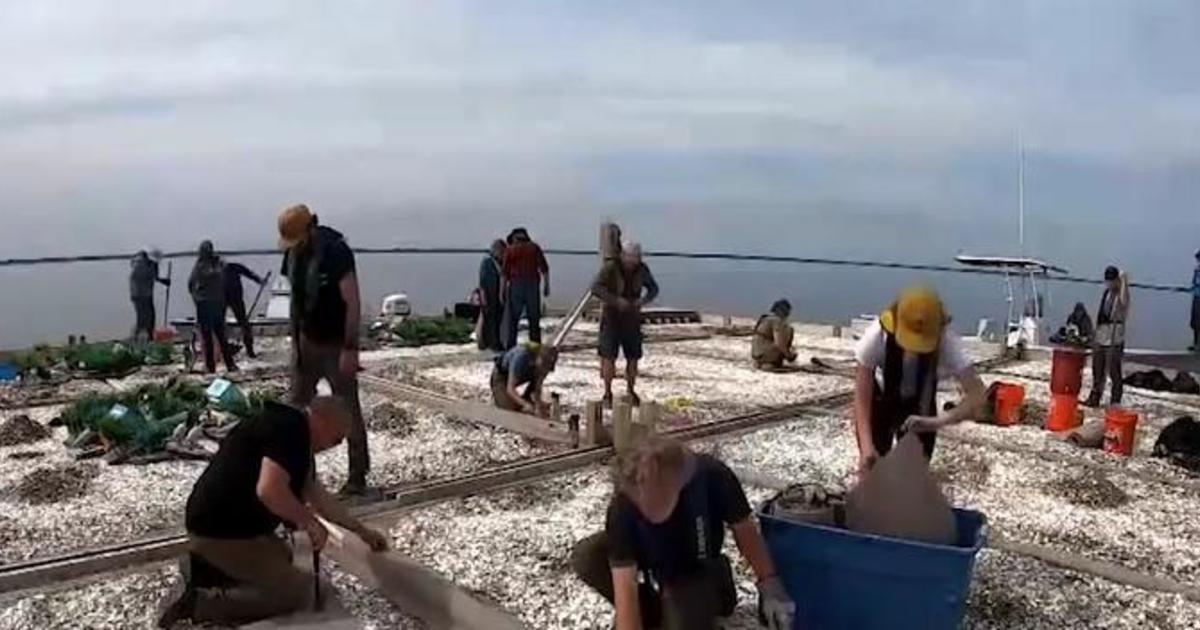Saving Smith Island: The Fight To Protect Vulnerable Chesapeake Bay Communities Threatened By Rising Water, Climate Change
SMITH ISLAND, Md. (WJZ) -- Maryland has more communities vulnerable to the rise in sea level than almost any other state.
And while some scientists believe it is inevitable that several Chesapeake Bay communities will eventually become submerged in the rising waters, many residents who live there vow to keep fighting to save their homes—and their way of life.
One of the most endangered places sits in the Chesapeake Bay, about 12 miles from Crisfield in Somerset County.
Smith Island is the last inhabited island chain in Maryland's Chesapeake Bay without any connection to the mainland—except by boat.
"It's a unique place, number one," said Eddie Somers who grew up on Smith Island. "Everybody knows your business."
"The saying on the island (is), 'When you get that mud between your toes, you just never want to leave,'" said Betty Tyler, a lifelong resident who only left for college.
Smith Island has long been known for its famous namesake layered cakes, which are Maryland's state dessert.
Smith Islanders also have a distinct way of talking: "Our O-Us and O-Ws. Like, I say 'house' and I say 'brown' (sounds like hose and bruin)," Tyler said.
The pace of life here hasn't changed much in the decades since Walter Cronkite's report back in February of 1965.
But some worry whether this Maryland treasure—now down to fewer than 200 residents from more than 800 in the 1960s—can survive the next 80 years. That is when water levels in the Chesapeake Bay are projected to rise as much as four feet, which would put pretty much everything under water.
"How hard a job is it protecting that shoreline?" WJZ Investigator Mike Hellgren asked Matt Whitbeck, a supervisory biologist with the Martin National Wildlife Refuge.
"It's a pretty tall order to be honest," Whitbeck said. "Sea levels are rising and land is subsiding, and that's happening at a background rate. The dramatic changes that you see year after year are the shoreline erosion. That's a very visible thing."
Some of the changes Whitbeck mentioned are visible in satellite imagery provided by NASA.
Neighboring Fox Island is also seeing sea levels rise.
Whitbeck is proud of the efforts to protect delicate marshland around Smith Island and stop coastal erosion. The federal government has pumped millions of dollars into projects including protective jetties—after residents watched the shoreline vanish at an alarming pace.
"The shoreline erosion is profound," Whitbeck said. "And particularly when you look at the aerial photographs from 10-20 years ago. ... There were peninsulas and coves on those islands, places that had names. that are now just lost to the Chesapeake Bay. And it's just that dramatic rate of erosion that we tried to address with these projects."
"Right now and for the next 50 years, I think she's keeping up," Scott Hardaway told Hellgren of Smith Island's fate.
Hardaway's company, Coastline Design PC, helped build what is called a "living shoreline," which includes large stone structures that disrupt the waves.
"It's a process by which you put breakwaters along the shoreline to control and create headlands and allow the area to continue to erode in between, and it will eventually stop eroding and create little embayments," Hardaway explained.
"How much time did you buy for Smith Island?" Hellgren asked.
"Well, like I say, we have abated the erosion and, I think we have abated it for 15-20 maybe even more years," Hardaway said.
On the island, the pandemic has brought more visitors, with people eager for an escape renting homes there. Many watermen now give tours by boat.
"Especially since Covid. We see a lot of people wanting to get away from everybody," said Mark Kitching, a waterman and lifelong resident who gave WJZ a tour of Ewell on his golf cart.
Ewell is the community that hosts most of those tourists.
"I never realized how little Marylanders knew about crabs until I got them in my shanty. Marylanders don't know nothing about crabs like Smith Islanders," Kitching quipped.
He, too, has seen the environmental changes.
"It has affected our livelihood because of the erosion. When the erosion takes place, it takes away the habitat. When the marsh leaves and bodies of land disappear, it changes everything around it," Kitching said. "We're used to working in shallow water. It all became deep water. …It's just because of one little island washing away—one little marsh Island—probably 25 acres of habitat was gone."
Hellgren asked Kitching where he sees Smith Island in 50 years.
"It's hard to say. …I see the land being here and I see people being here," Kitching said.
Eddie Somers does, too. He grew up on the island and brought WJZ there on his boat. Despite having a home there, Somers said he's not worried about sea-level rise.
"Sea level rise does not worry me. Major hurricanes do," he said. "I mean, I'm not crazy."
Many residents are not so sure whether the cause of the problems is human-made climate change. The same goes for public opinion in nearby Tangier Island, which may not survive even the next 50 years, according to a CBS News report.
"I am not sure," Betty Tyler said when asked if she believes climate change is to blame. "I listened to all the things. You'll hear people give speeches about the sea level rising, but I also hear that it's everywhere on the waterfront, not just on our island."
Tyler's family owns a number of businesses on Smith Island including the island's lone gas station.
"It's sort of like one big family. If you're in trouble, the whole island is in trouble," she said.
Tyler acknowledged that flooding from rising tides has made it more difficult for some of her employees.
"If they live on the other end of the lowland, they may have to leave home 2 or 3 hours ahead of time just to get to work," she said. "Because when they were supposed to come to work, the tides are going to be flooded on the roads, and then they can't get to work."
"Do you worry about what things are going to look like in 25 years, 50 years?" Hellgren asked.
"Oh, yeah. I don't want business to end now. We want it to keep going for the next generations," she said.
Tyler said the jetties and other protective measures are helping. And she has faith in the future—hoping the water that's been the lifeblood of Smith Island won't be its downfall.
"If they can raise our roads a little bit and stop the floods from coming in more, it would be a whole lot easier to live there," she said. "When life gets so hard to live in a place, sometimes you give up and you say 'I'm not doing this any more.' But I don't plan on doing that. I want to stay, and I think most of the island people will stay… I don't want to live anywhere else."







